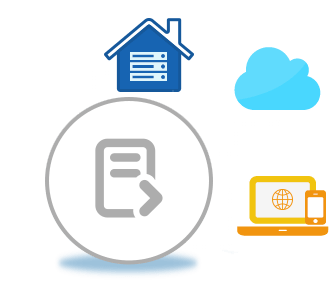HTML
JSON
XML
SVG
POWERPOINT

EXCEL
Java API to Export EXCEL to POWERPOINT or Online App
On Premise Java API to Export EXCEL to POWERPOINT or online without relying on Microsoft Excel®
How to Convert EXCEL to POWERPOINT via Java API
Rendering EXCEL to POWERPOINT is a two step process. You’ll first use Aspose.Cells for Java API to convert the given EXCEL document to PDF, and then by using Aspose.PDF for Java API, you can easily convert your PDF document to POWERPOINT. Both APIs come under the collection of Aspose.Total for Java file format automation libraries.EXCEL to POWERPOINT Conversion on Java
Conversion Requirements
You can easily use Aspose.Total for Java directly from a Maven based project and include Aspose.Cells and Aspose.Pdf in your pom.xml.
Alternatively, you can get a ZIP file from downloads .
Online Converter for EXCEL to POWERPOINT
Converting **Excel to PowerPoint** is essential for generating **presentations** directly from spreadsheet data. This process allows organizations and educators to transform charts, tables, and analytics into visually engaging slides, enhancing communication and decision-making. By converting Excel to PowerPoint, teams can create professional presentations efficiently, maintain data accuracy, and streamline reporting workflows.
Key Use Cases
- Business meetings – Present financials and analytics in a structured slide format.
- Financial dashboards – Transform spreadsheet dashboards into interactive presentations.
- Academic lectures – Convert research and data analysis into educational slides.
- Marketing pitches – Showcase data-driven insights for campaigns and strategies.
- Performance reviews – Illustrate departmental or individual metrics in clear presentations.
Automation Scenarios
- Excel-to-PowerPoint pipelines – Automate conversion of spreadsheet content into slides.
- Automated slide generation – Generate presentation decks directly from Excel data.
- Bulk data-to-presentation workflows – Convert multiple spreadsheets into slides efficiently.
- Enterprise-level reporting presentations – Integrate Excel-to-PowerPoint into corporate reporting systems.
FAQ
- How can I convert EXCEL to POWERPOINT Online?Online App for EXCEL conversion is integrated above. The conversion process involves adding your EXCEL file either by dragging and dropping it into the white area or clicking inside the area to import the file. Once the file is added, simply click the Convert button to start the conversion process. Once completed, you can download your newly converted POWERPOINT file with just a single click.
- How long does it take to convert EXCEL?The speed of this online converter is largely determined by the size of the EXCEL file being converted. Smaller EXCEL files can be converted to POWERPOINT within just a few seconds. Additionally, if you have incorporated the conversion code within a Java application, the efficiency of the application will also influence the conversion process.
- Is it safe to convert EXCEL to POWERPOINT using free Aspose.Total converter?Of course! After the conversion process is complete, a download link for the POWERPOINT file will be made available immediately. Uploaded files are deleted automatically after 24 hours, and the download links will no longer be active beyond that time frame. You can be assured that your files are safe, and file conversion, including EXCEL, is completely secure. The free app has been integrated primarily for testing purposes, allowing you to verify the results before integrating the code into your project.
- What browser should I use to convert EXCEL?For online conversion, you can use any modern web browser such as Google Chrome, Firefox, Opera, or Safari. However, if you are developing a desktop application, the Aspose.Total EXCEL Conversion API is an excellent choice as it is designed to work seamlessly in such environments.
Explore EXCEL Conversion Options with Java
Convert EXCEL to DOC
(Microsoft Word Binary Format)
Convert EXCEL to DOCX
(Office 2007+ Word Document)
Convert EXCEL to PPTX
(Open XML presentation Format)
Convert EXCEL to WORD
(WordProcessing File Formats)





